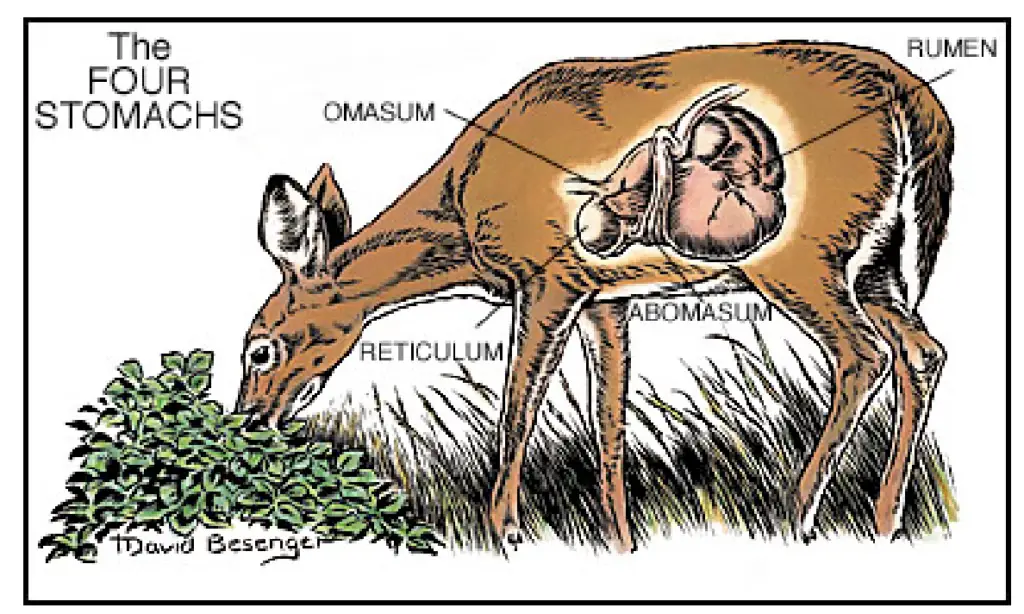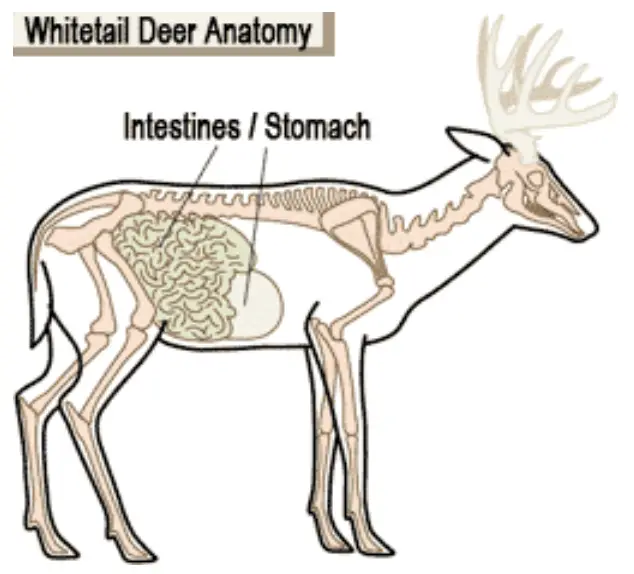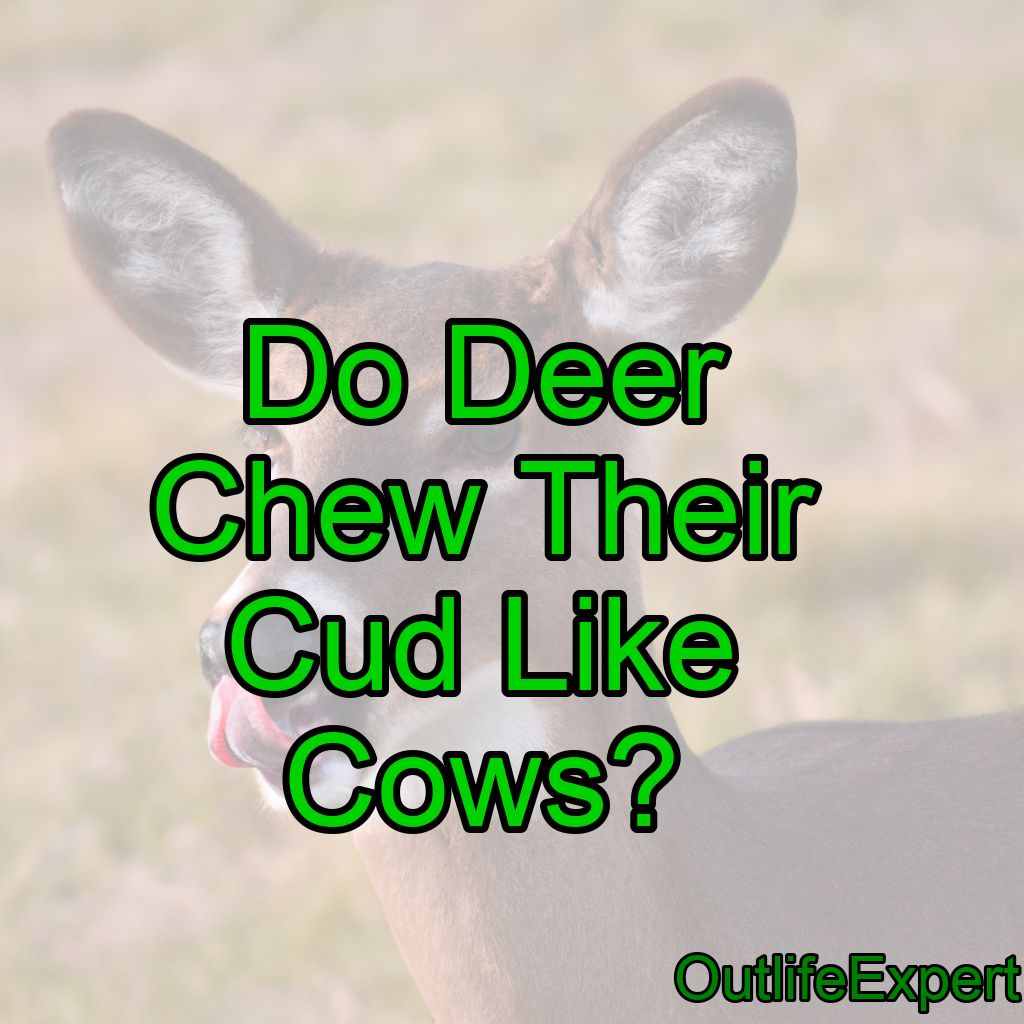It’s a common misconception that deer, like cows, are constantly chewing their cud. In actuality, while both animals belong to the order Artiodactyla and share various similarities in their digestive systems, there are some key differences in how they process food.
Deer chew their cud like cows. Both deer and cows are ruminant animals, meaning they have a specialized stomach with four compartments to break down complex plant materials.
They initially chew and swallow their food, which goes into the first chamber called the rumen. Later, they regurgitate the partially digested food, called cud, and chew it again to further break it down before swallowing it for final digestion.
This process allows them to extract maximum nutrients from their plant-based diet.
Cows have become iconic for their seemingly endless chewing, which is actually an important part of their digestive process called rumination.
This involves regurgitating previously swallowed food, breaking it down further by chewing again before swallowing.
On the other hand, deer don’t engage in this behavior quite as frequently or as obviously as cows do.
In the following article, we’ll explore the reasons behind these differences and examine the shared characteristics that allow both deer and cows to efficiently digest plant material.
Overview Of Ruminant Animals
In the realm of mammalian physiology, ruminant animals possess a unique adaptation in their digestive system that allows them to efficiently break down fibrous plant material found in herbivorous diets.
This process, called ruminating behavior, involves regurgitating partially digested food and re-chewing it to further expose it to digestive enzymes and facilitate a more thorough breakdown of nutrients.
The elongated digestion time this behavior affords enables ruminants to extract maximum nutritional value from their forage.
As we delve further into the specifics of deer anatomy, we will examine how their digestive system is designed to support this remarkable process.
Anatomy Of Deer’s Digestive System
The deer’s esophagus is a long, flexible tube that connects the mouth to the stomach. It is lined with tough layers of muscle tissue that allows food to move down the esophagus to the stomach.
The stomach of a deer is relatively small compared to other ruminants. The first two chambers of the stomach are known as the rumen and the reticulum.

The rumen contains numerous bacteria and other microorganisms which help in the initial digestion of food. The reticulum is used to store food particles before they are digested.
The small intestine of a deer is where the majority of digestion and absorption of nutrients takes place. The small intestine is composed of three sections – the duodenum, jejunum, and ileum.
The large intestine of a deer is relatively short and is composed of the cecum, colon, and rectum. Bacteria in the large intestine are responsible for breaking down any remaining food particles and absorbing water from the contents.
The liver, pancreas, and gall bladder of a deer all produce digestive juices that help to break down food. The liver produces bile, the pancreas produces enzymes, and the gall bladder releases bile when needed.
Saliva is also produced in the mouth to help with the breakdown of food. Deer, like all ruminants, chew their cud, which is partially digested food that is regurgitated from their first stomach.
This is necessary for the deer to extract all the nutrients from the food they consume.
Esophagus
You might be wondering how deer manage to break down their food so effectively, and the answer lies in their esophagus.
A critical component of the anatomy of a deer’s digestive system, the esophagus is responsible for transporting food from the mouth to the rumen where rumen bacteria work tirelessly to ferment and process it.
As a biologist, I find it fascinating to note that deer have specialized salivary glands which produce enzymes and saliva that help neutralize acids formed during fermentation, allowing them to maintain an optimal environment for the rumen bacteria.
Moreover, these glands also moisten the food intake, ensuring smooth passage through the esophagus into the stomach.
Thus, it becomes evident that a deer’s esophagus plays an indispensable role in facilitating efficient digestion and nutrient absorption, contributing significantly to their survival and overall health.
Stomach
Now that we’ve delved into the crucial role of the esophagus, let’s explore another vital component of a deer’s digestive system – their stomach.

Comprising four chambers, it is designed to handle a wide variety of forage selection, which is essential for deer as they are opportunistic browsers.
The first chamber, the rumen, serves as a fermentation vat housing billions of gut microflora that aid in breaking down cellulose and other fibrous plant components.
This process of rumen fermentation produces volatile fatty acids (VFAs), which can be absorbed by the deer as crucial energy sources.
Furthermore, these gut microflora also synthesize essential amino acids and vitamins required for maintaining optimal health.
As such, it becomes apparent that a deer’s stomach plays an exemplary role in ensuring maximum nutrient extraction from their varied diet in order to fuel their survival and growth.
Small Intestine
Moving on from the deer’s highly specialized stomach, we now turn our attention to the small intestine, yet another crucial aspect of their digestive system.
As herbivore behavior entails breaking down plant components and extracting nutrients efficiently, the small intestine plays a critical role in achieving this feat.
Here, the rumination cycle allows for further processing of partially digested food, ensuring that it is adequately broken down before entering the small intestine.
In this section, various digestive enzymes work hand-in-hand with bile and pancreatic secretions to break down proteins, carbohydrates, and fats into smaller molecules that can be absorbed by the intestinal lining.
Additionally, these enzymes play a pivotal role in releasing essential vitamins and minerals found in plant material.
It becomes evident that the small intestine is an indispensable part of a deer’s digestive system as it works tirelessly to ensure they receive all necessary nutrients from their daily forage.
Food Digestion Process
Deer, similar to cows, exhibit a foraging behavior called rumination, which is the process of chewing cud.
This unique food digestion process involves regurgitating partially digested plant material from their stomach compartments and thoroughly chewing it to extract maximum dietary nutrition.
During rumination time, deer repeatedly chew on their cud, breaking down the fibrous plant material before swallowing it again for further digestion.
This allows them to efficiently extract nutrients from their diet and thrive in various habitats. Next, we will delve into the differences between deer and cows that set them apart despite sharing this distinctive digestive trait.
Differentiating Between Deer And Cows
Despite similarities in their foraging behavior, deer and cows exhibit noteworthy differences in their digestive systems and chewing habits.
While both species are ruminants and possess multi-chambered stomachs, the rumen size of deer is significantly smaller than that of cows, which affects their regurgitation process and chewing frequency.
Hindgut fermentation plays a more prominent role in deer digestion compared to cows, leading to a differing reliance on cud chewing for breaking down plant material.
This distinction between the two species sets the stage for an exploration into the benefits of cud chewing, as understanding these nuances may shed light on the broader scope of ruminant digestion strategies.
Benefits Of Cud Chewing
The ruminating behavior in deer, similar to that in cows, is a crucial aspect of their digestive process. Cud regurgitation and re-chewing allow these animals to break down fibrous plant material efficiently, maximizing the extraction of essential nutrients.
This increased chewing time exposes the ingested food particles to digestive enzymes for an extended period, thus enhancing digestion and nutrient absorption.
Furthermore, the act of re-chewing stimulates saliva production, which plays a vital role in buffering the rumen environment and maintaining a stable pH level.
A stable rumen pH is necessary for optimal microbial activity and overall gut health, ensuring that deer can effectively digest their fibrous diet and obtain sufficient energy for their daily activities.
Conclusion
In conclusion, it is clear that deer, like cows, are ruminant animals. They possess a complex digestive system that allows them to break down fibrous plant material through the process of rumination.
As a biologist, I find this adaptation fascinating as it enables these herbivores to thrive in various environments by efficiently extracting nutrients from their diet.
The differences between deer and cows in terms of their digestive systems are minimal. Both species rely on the fermentation process within their four-chambered stomachs to break down cellulose found in plants.
The act of cud chewing not only aids in mechanical breakdown but also promotes further enzymatic activity, enhancing nutrient absorption.
It’s important for us to study and understand these subtle differences to better comprehend the ecological roles they play. Lastly, understanding the benefits of cud chewing provides insight into how ruminants have evolved over time.
This adaptive trait undoubtedly contributes to their success as herbivores across diverse ecosystems.
By studying such intricate biological processes, we can continue to learn more about the natural world and how different species have adapted to survive and flourish in their respective niches.





